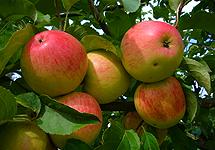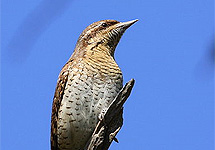HNV Farming & Biodiversity
Wolferskopf (Saargau, Germany)

Natura site name: Wolferskopf
Natura Code: DE-6506-301
Large site encompassing all typical habitats of this Muschelkalk region with orchid-rich dry grasslands, lowland hay meadows, orchards, rocky slopes with scree and different forest communities.
Text: B. Hill
© Photos: R. Manderbach, Carles Pastor ("Vogesenrind"; Wickipedia), EPei (Wryneck; Wickipedia)















